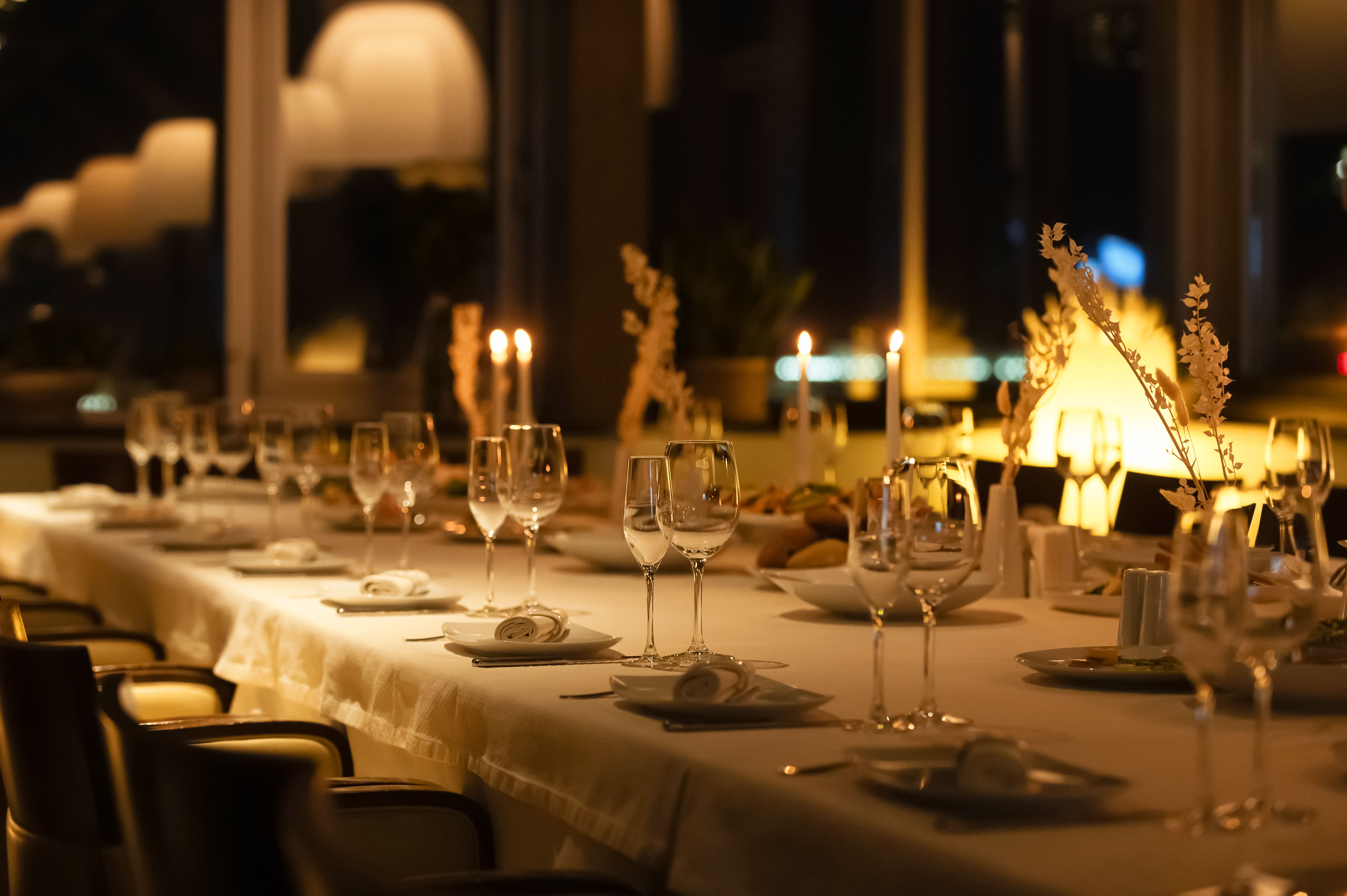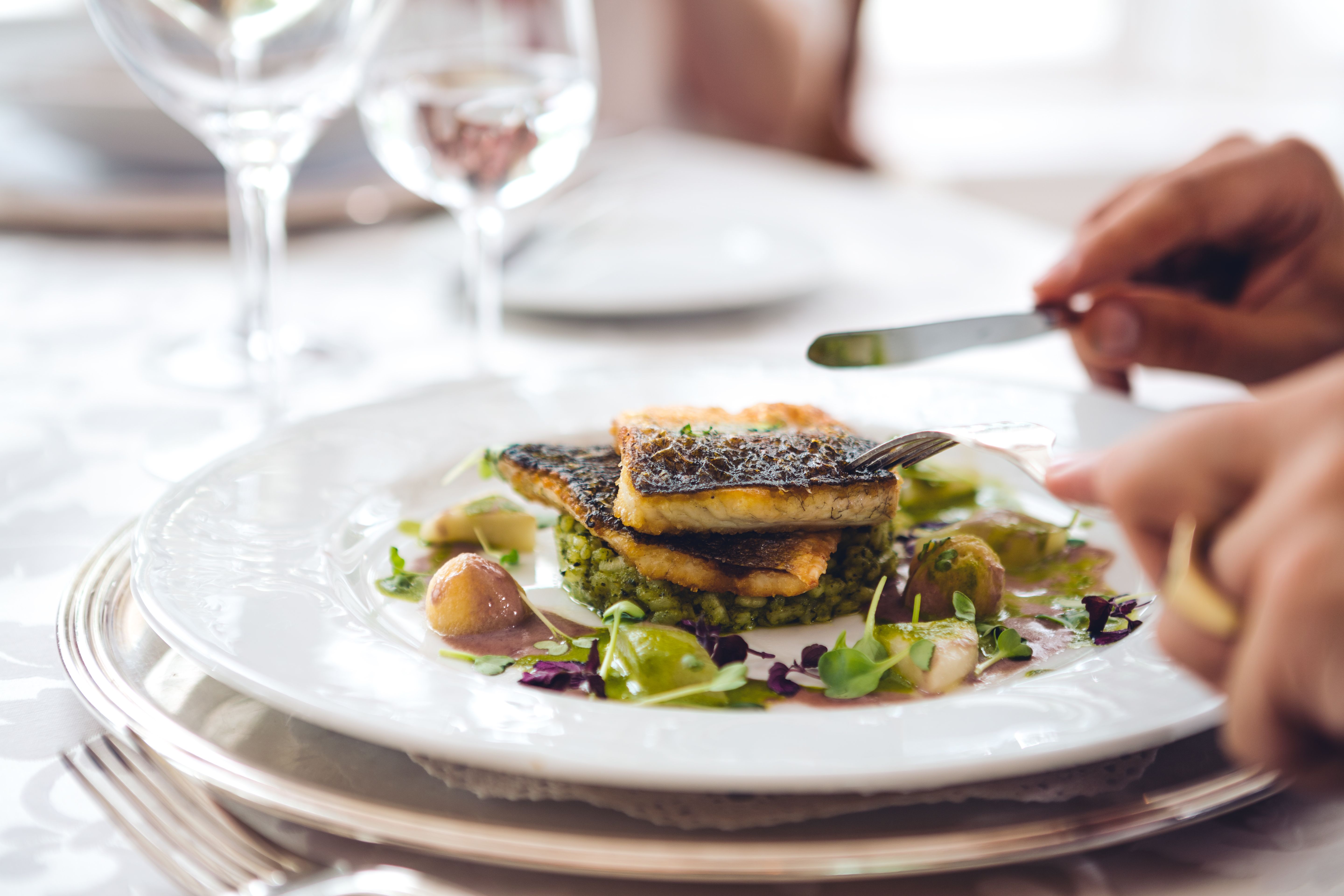Mastering Fine Dining Etiquette: A Guide to Elegant Dining
Understanding the Basics of Fine Dining
Mastering fine dining etiquette is an art that elevates your dining experience to new heights. Whether you're attending a formal dinner, a business meeting, or a special occasion, understanding the basics of elegant dining can make a significant difference. Fine dining is not just about savoring exquisite food; it's about appreciating the entire experience, from the ambiance to the service.
First and foremost, it's essential to be aware of the dress code. Fine dining often comes with specific attire requirements. Aim for a polished and sophisticated look; this usually means a suit and tie for men and a cocktail dress or an elegant ensemble for women. Dressing appropriately shows respect for the dining establishment and its patrons.

The Importance of Table Manners
Table manners play a crucial role in fine dining etiquette. Start by waiting for everyone to be seated before picking up your napkin and placing it on your lap. When it comes to using utensils, remember the basic rule: work from the outside in. Begin with the outermost utensils for the first course and move inward with each subsequent course.
During the meal, maintain good posture and avoid resting your elbows on the table. When conversing with others at the table, speak softly and listen attentively. It’s important to engage in pleasant conversation without speaking with your mouth full, as this is considered disrespectful in any dining setting.
Navigating the Menu and Wine Selection
Selecting the right dish and wine can greatly enhance your dining experience. When handed the menu, take your time to peruse it carefully. If you're unsure about any items, don't hesitate to ask the server for recommendations or explanations. They are there to ensure you have an enjoyable experience.
Wine pairing is another aspect where etiquette comes into play. If the restaurant has a sommelier, take advantage of their expertise. They can guide you in choosing a wine that complements your meal perfectly. When tasting the wine, remember to swirl, sniff, and take a small sip to appreciate its aroma and flavor before making your decision.
Handling Common Dining Scenarios
Fine dining often involves multiple courses, each presenting its own set of etiquette rules. For example, when you're finished with a course, place your utensils parallel on your plate to signal to the server that you're done. If you need to excuse yourself during the meal, leave your napkin on your chair rather than on the table.

If you encounter unfamiliar foods, approach them with an open mind. Trying new dishes is part of the fine dining experience. Should you need to decline a dish or drink, do so politely and discreetly without drawing attention.
The Art of Tipping
Tipping is an integral part of fine dining etiquette. It reflects your appreciation for the service provided. In most countries, a tip of 15-20% of the total bill is customary, although this can vary depending on local customs and service quality. If in doubt, consult local tipping guidelines or ask for advice when making your reservation.
Remember, mastering fine dining etiquette is about showing respect for those around you and enhancing your overall experience. With these tips in mind, you'll be well on your way to becoming a connoisseur of elegant dining.
Commercial Kitchen http://avice.org
